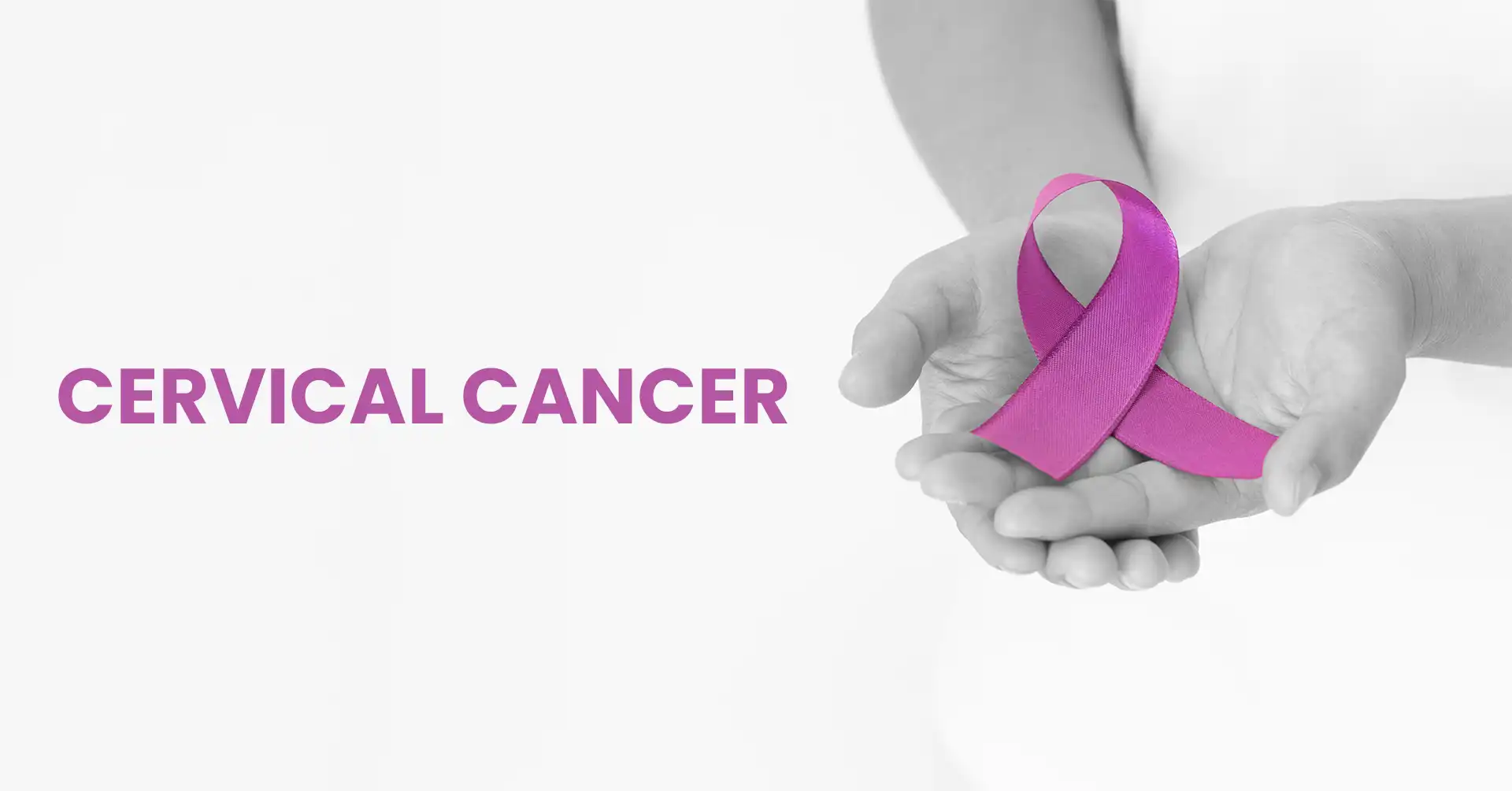Hello,my wonderful readers! Unveiling the silent threat that affects millions of women worldwide, this blog sheds light on “Cervical Cancer: Recognizing and Addressing Symptoms of Cervical Cancer.” Cervical cancer, a formidable adversary, often lurks unnoticed until it reaches advanced stages. In this comprehensive guide, we embark on a journey to demystify the symptoms associated with cervical cancer, empowering readers to recognize and address potential warning signs.
Cervical cancer, primarily caused by persistent human papillomavirus (HPV) infection, is a critical health concern for women of all ages. The importance of early detection cannot be overstated, as timely intervention can significantly impact treatment outcomes and overall prognosis. Through an exploration of common indicators, we aim to arm readers with knowledge that could prove instrumental in identifying cervical cancer symptoms in their early stages.
Join us as we delve into the intricacies of cervical cancer, offering insights into the signs that should not be ignored. By fostering awareness and understanding, this blog strives to play a vital role in the proactive approach to women’s health, emphasizing the significance of regular screenings and preventive measures. Together, let’s unravel the complexities of cervical cancer and pave the way for a healthier, informed future.
What is Cervical Cancer?
Cervical cancer is a malignancy that originates in the cervix, the lower part of the uterus that connects to the vagina. It is primarily caused by persistent infections with high-risk strains of the human papillomavirus (HPV). This insidious disease develops slowly over several years, beginning with the abnormal growth of cells on the cervix.
In active voice, let’s dissect the process: Healthy cervical cells undergo changes due to HPV infection. The virus integrates its genetic material into the cells, disrupting their normal function and prompting them to multiply uncontrollably. These abnormal cells can form precancerous lesions, a crucial stage where intervention can prevent the progression to full-blown cancer.
If undetected or untreated, these precancerous cells may evolve into invasive cancer, spreading beyond the cervix to nearby tissues and, eventually, to other parts of the body. Active involvement in understanding the risk factors, such as smoking, a weakened immune system, and early initiation of sexual activity, empowers individuals to take preventive measures.
Regular screenings, like Pap smears and HPV tests, play a pivotal role in early detection. Through these tests, healthcare professionals can identify abnormal cells before they become cancerous or detect cancer in its initial stages when treatment is most effective. Cervical cancer, while posing a significant health threat, is also a disease that can be proactively managed with awareness, education, and timely medical intervention.
Stages to Deal with Cervical Cancer?
Recognition of Symptoms:
Actively monitor and acknowledge potential symptoms of cervical cancer, including abnormal vaginal bleeding, pelvic pain, and pain during intercourse. Be attentive to any changes in menstrual cycles or unusual discharge.
Consultation with Healthcare Professionals:
Take an active step by promptly seeking consultation with a healthcare professional if any cervical cancer symptoms are observed. Timely medical advice is crucial for accurate diagnosis and appropriate intervention.
Diagnostic Testing:
Engage in diagnostic tests such as Pap smears and HPV tests, actively participating in screening to identify abnormal cells or the presence of high-risk HPV strains. Regular screenings enhance the chances of early detection.
Biopsy and Confirmation:
Upon identification of abnormal cells, actively participate in the biopsy process. This involves the removal of a small tissue sample from the cervix for laboratory analysis, confirming the presence of cervical cancer, and determining its specific type.
Staging Assessments:
Collaborate with healthcare professionals in undergoing imaging tests, like MRI or CT scans, to determine the extent of cancer spread actively. Staging is crucial in guiding treatment decisions and understanding the overall prognosis.
Treatment Planning:
Discuss with healthcare providers to explore treatment options, including surgery, radiation therapy, chemotherapy, or a combination. Contribute actively to the decision-making process based on individual circumstances and preferences.
Treatment Implementation:
Actively undergo the chosen treatment plan, attend appointments, and adhere to prescribed medications or therapies. Actively communicate any concerns or side effects experienced during the treatment process.
Monitoring and Follow-Up:
Stay engaged in post-treatment monitoring and follow-up appointments. Regular check-ups and screenings are essential to actively monitor for any signs of recurrence or new developments, ensuring ongoing proactive management of cervical cancer.
Lifestyle Adjustments:
Actively participate in adopting a healthy lifestyle, including maintaining a balanced diet, regular exercise, and avoiding tobacco use. These active choices contribute to overall well-being and can positively impact the outcome of cervical cancer treatment.
Supportive Networks:
Actively seek and engage with support networks, including friends, family, and support groups. Emotional and social support plays a vital role in coping with the challenges associated with cervical cancer and its treatment.
How to Recognize Cervical Cancer?
Recognizing cervical cancer involves a keen awareness of potential symptoms and proactive engagement in preventive measures. Here’s a detailed guide on how to recognize cervical cancer:
Understand Common Symptoms:
Actively educate yourself about the common symptoms associated with cervical cancer. Watch for signs such as abnormal vaginal bleeding between periods, after menopause, or after intercourse. Persistent pelvic pain or pain during sexual activity can also be indicators.
Monitor Menstrual Changes:
Actively observe any changes in your menstrual cycle, such as irregularities or variations in flow. Unexplained changes may signal underlying issues and warrant further investigation.
Pay Attention to Discharge:
Actively be aware of any unusual vaginal discharge, especially if it is foul-smelling, contains blood, or differs significantly from your regular discharge. Report any abnormalities to your healthcare provider.
Regular Self-Exams:
Actively perform regular self-examinations. While cervical cancer may not always cause noticeable symptoms in its early stages, being familiar with your body and detecting any unusual changes in the cervix can be crucial.
Screening Tests:
Actively participate in screening tests, such as Pap smears and HPV tests. As healthcare professionals recommend, regular screenings contribute significantly to early detection and prevention.
Know Your Risk Factors:
Actively assess your risk factors for cervical cancer. Factors such as a history of HPV infection, smoking, a weakened immune system, early initiation of sexual activity, and a family history of cervical cancer can increase your susceptibility.
Seek Prompt Medical Attention:
Actively consult with healthcare professionals if you experience any of the aforementioned symptoms or notice any unusual changes in your reproductive health. Early medical intervention is crucial for accurate diagnosis and timely treatment.
Biopsy Confirmation:
Actively participate in a biopsy if recommended by your healthcare provider. A biopsy involves removing a small tissue sample from the cervix for laboratory analysis, confirming the presence of abnormal cells or cervical cancer.
Imaging Tests for Staging:
Actively undergo imaging tests, such as MRI or CT scans, if cervical cancer is suspected. Staging assessments are essential to determine the extent of cancer spread and guide appropriate treatment decisions.
Regular Follow-Up:
Actively engage in post-diagnosis follow-up appointments. Regular check-ups and screenings are crucial for monitoring the effectiveness of treatment, detecting any signs of recurrence, and maintaining overall reproductive health.
Recognizing cervical cancer requires a proactive and vigilant approach. By staying informed, participating in screenings, and seeking prompt medical attention, individuals can play an active role in the early detection and management of cervical cancer.
How to Treat it?
Effectively treating cervical cancer involves a comprehensive and multidisciplinary approach. Here’s a detailed guide on how to actively engage in the treatment process:
Consultation with the Healthcare Team:
Begin by actively consulting with a healthcare team that specializes in gynecologic oncology. Actively participate in discussions to understand the specific details of your diagnosis and treatment options.
Surgical Interventions:
Consider surgical options, such as a hysterectomy, where the uterus and possibly surrounding tissues are removed. Discuss the benefits and potential risks with your surgeon to make informed decisions.
Radiation Therapy:
Actively engage in discussions about radiation therapy. This treatment uses high-dose X-rays to target and destroy cancer cells. Actively participate in planning sessions and adhere to the prescribed treatment schedule.
Chemotherapy:
Participate actively in discussions about chemotherapy, which involves the use of drugs to kill cancer cells or stop their growth. Understand potential side effects and actively communicate any concerns with your healthcare team.
Targeted Therapy:
In some cases, targeted therapy may be recommended to target cancer cells without harming normal cells. Discuss this option with your healthcare provider to determine its suitability for your treatment plan.
Immunotherapy:
Explore the possibility of immunotherapy, an active treatment that stimulates the body’s immune system to recognize and destroy cancer cells. Discuss the potential benefits and risks with your healthcare team.
Clinical Trials:
Actively inquire about and consider participating in clinical trials that explore innovative treatments. These trials contribute to ongoing advancements in cervical cancer treatment.
Fertility Preservation:
If fertility preservation is a concern, actively discuss options such as egg or embryo freezing before initiating treatment. Make informed decisions regarding family planning with the guidance of your healthcare team.
Manage Side Effects:
Actively manage and communicate any side effects experienced during treatment. Engage with healthcare professionals to address discomfort, nausea, fatigue, or any other challenges associated with the chosen treatment modalities.
Emotional Support and Well-Being:
Actively seek emotional support from friends, family, or support groups. Mental well-being is integral to the treatment journey. Engage in activities that promote relaxation and coping strategies to navigate the emotional challenges associated with cervical cancer treatment.
Regular Follow-Up:
Actively participate in regular follow-up appointments post-treatment. Routine check-ups and screenings are crucial for monitoring recovery, detecting any signs of recurrence, and ensuring overall health.
Active participation in the treatment process empowers individuals to make informed decisions and contributes to a more effective and personalized approach to managing cervical cancer. Open communication with healthcare professionals and a proactive mindset are key elements in achieving the best possible outcomes.
Conclusion
Understanding and actively addressing the symptoms of cervical cancer emerge as paramount in the pursuit of women’s health. By recognizing the subtle indicators and taking proactive steps, individuals can play a pivotal role in early detection, enhancing the chances of successful treatment outcomes.
The journey to combat cervical cancer begins with awareness, regular screenings, and a commitment to one’s well-being. Through this blog, we aimed to empower our readers with knowledge, fostering a sense of agency in their healthcare journey. Cervical cancer is not an insurmountable foe; rather, it is a battle that can be won through vigilance and timely intervention.
As advocates for women’s health, we encourage everyone to share this information, promoting a collective understanding of the importance of recognizing and addressing cervical cancer symptoms. Together, we can dispel the shadows that surround this condition, offering a beacon of hope for those at risk.
Remember, early detection saves lives. Actively participate in routine screenings, consult with healthcare professionals, and spread awareness. By actively engaging in the fight against cervical cancer, we contribute to a future where this disease is not just recognized but actively prevented and ultimately conquered. Let knowledge be our shield, and proactive healthcare is our sword in the battle against cancer.
Read More:
Stress-Relieving Strategies To Help Deal With Your Stressful Life!






